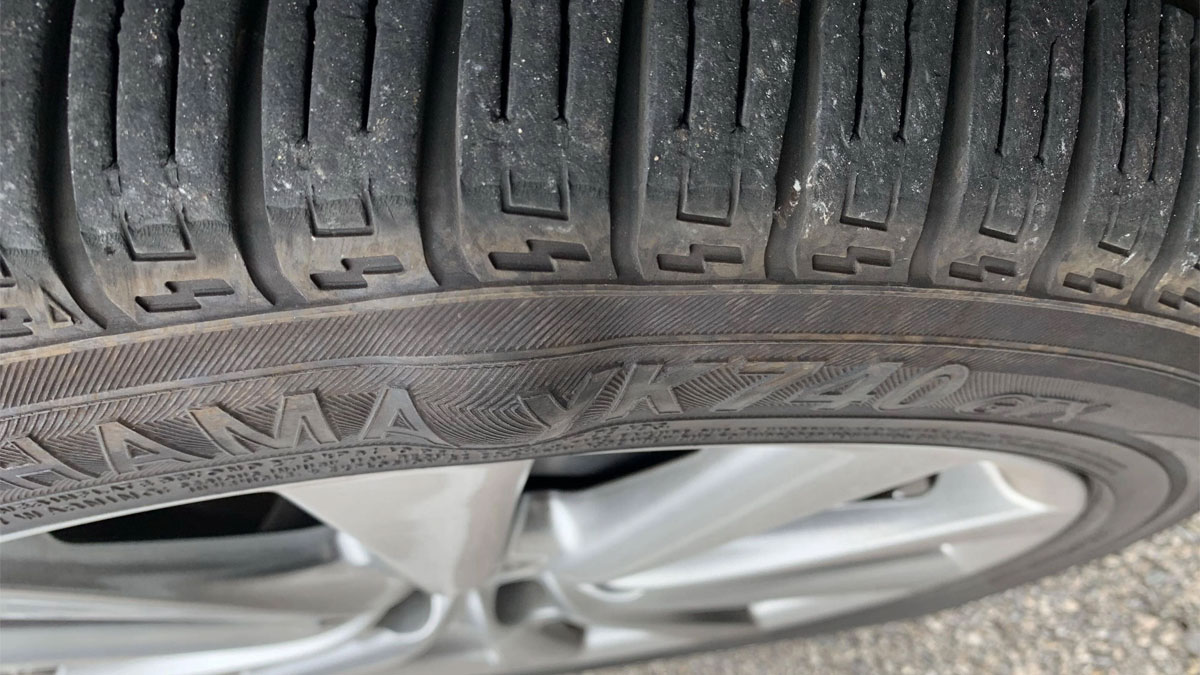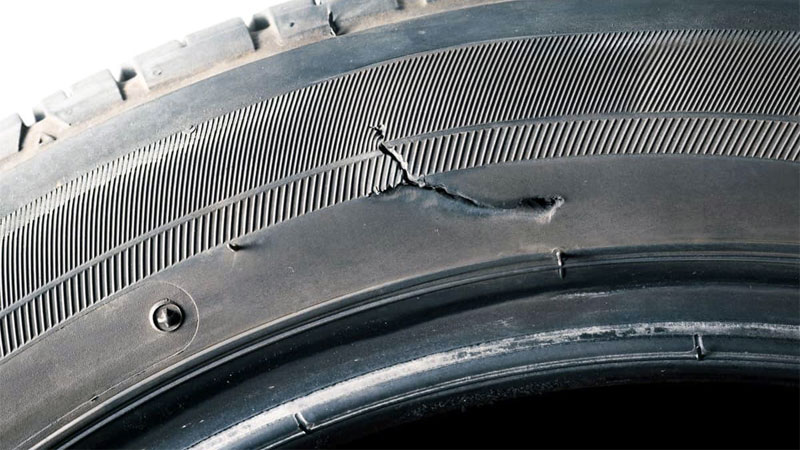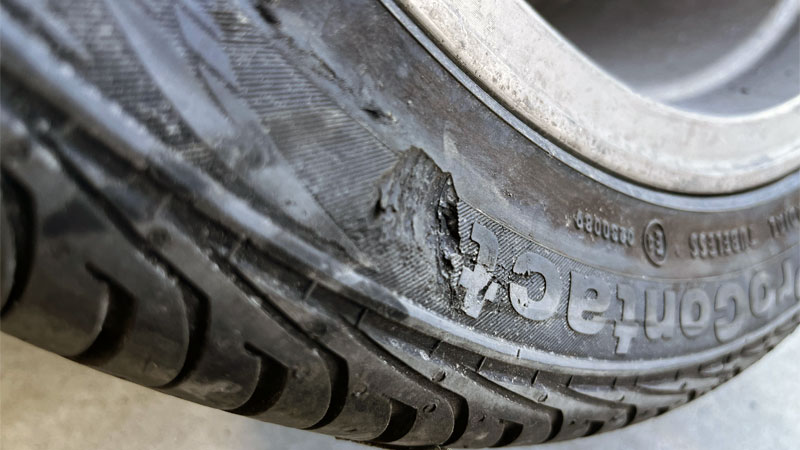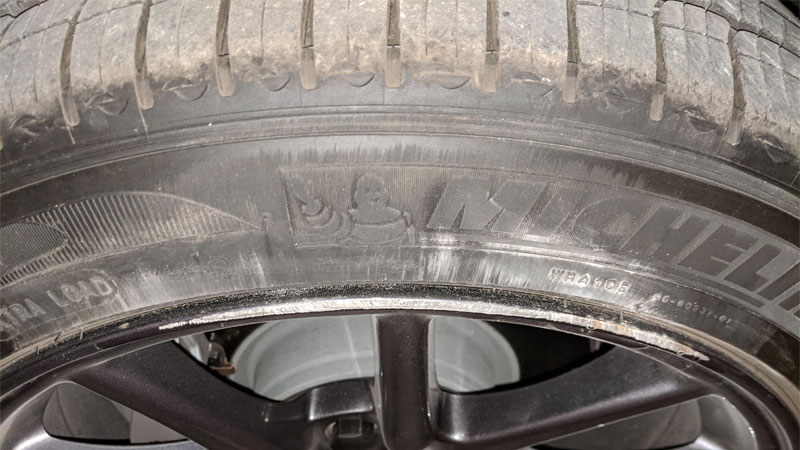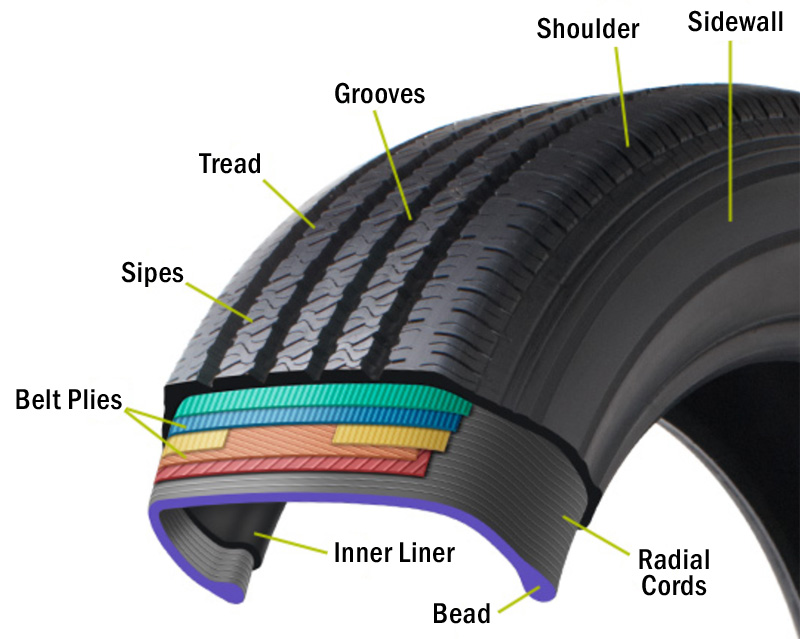Dodging potholes, rubbing curbs, and running over debris—these common mishaps often leave marks. But while some tire damage is superficial, others signal real trouble.
By learning to recognize the different types of tire damage and what causes each, you’ll be able to distinguish the harmless from the hazardous.
See Also – How Long Does It Take to Change a Tire?
Tire Damage Types
Tire damage comes in many different forms, some of which pose a more immediate cause for concern than others. This is where it pays to understand the gravity of such defects, and what they mean in regards to the longevity of a vehicle’s tires as a whole.
The following are several of the most common types of tire damage.
Irregular Tread Wear
Irregular tread wear can come in many forms, including cupping, feathering, and choosing. Generally, each indicates mechanical wear of one sort or another in a vehicle’s steering or suspension systems.
Wear of this type can be minimized through regular tire rotation, though a trip to the mechanic is in-store if such wear progresses significantly.
Puncture
Punctures of any type to a tire are cause for concern and typically come as the result of driving over roadside debris.
If small enough (typically a nail or screw) and optimally placed, most basic punctures can be repaired at a tire shop or with a repair kit. However, punctures to a tire’s shoulder or sidewall are condemnable and ultimately warrant replacement.
Cut or Tear
Cuts or tears to a tire’s tread or sidewall require immediate inspection. If extremely shallow and primarily cosmetic in nature, cuts or tears in a tire can be monitored closely, without the need for stoppage of your commute.
However, any damage of this type that appears noteworthy, especially to the extent of exposing a tire’s fiber structure or belting, likely warrants replacement.
Bulge or Bubble
Any tire with a bubble or noticeable bulge in its sidewall warrants immediate discontinuation and replacement. This being said, it is normal to notice a slight wherever the sidewall seams of a tire adjoin.
That said, if such imperfections begin to outwardly bulge, or noticeably protrude outward, replacement will prove necessary.
Crack or Dry Rot
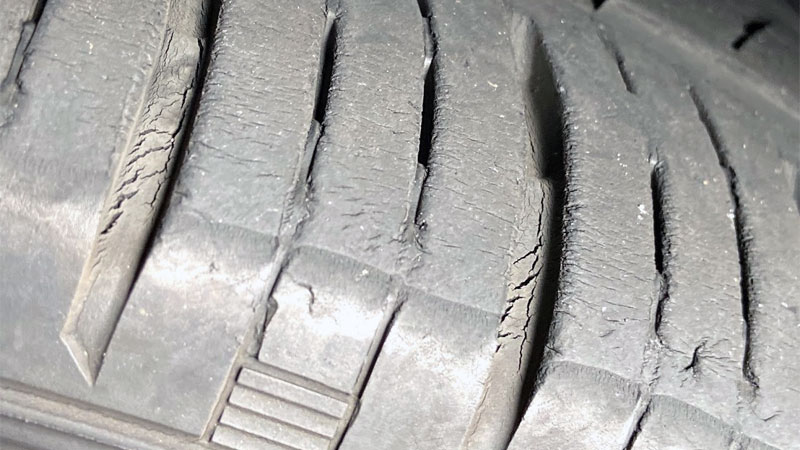
The most common forms of cracks associated with automotive tires are those related to dry rot. Damage of this type is generally caused by the dehydration of a tire’s rubber casing as it ages.
While minor dry-rot is not outwardly condemnable, significant dry-rot leading to compromised structural integrity is. As a general rule of thumb, a tire should be condemned whenever dry-rot cracks begin to split and gap to the approximate thickness of a US dime.
Impact Damage
Impact damage to a tire can come in one of several different forms. If curbed, a tire’s sidewall can begin to bulge, exhibiting a “goose-egg” type defect.
Damage of this type should raise immediate concern, ultimately resulting in prompt discontinuation of use. Additionally, impact damage parlayed directly to a tire’s tread segment can result in one or more shifted belts, necessitating replacement.
Curb Rash
Curb rash often serves as a sign that catastrophic tire failure has only narrowly been avoided. Damage of this type indicates that a vehicle’s tire has come into contact with a curb while in motion, resulting in a surface abrasion of sorts.
While such damage bears watching, it is not necessarily condemning, unless it results in a noticeable bulge, signifying that the tire’s inner liner has sustained damage.
Blow Out
Of course, a blowout is an obvious sign of catastrophic failure of a vehicle’s tire. Such indiscriminate failure often comes as the result of severe curbing, or other noteworthy in-service failure.
There is no turning back from damage of this type, as replacement of the tire in question will be required no matter the circumstances involved.
Parts of a Tire (Anatomy)
A tire is composed of several different sub-sections, each of which serves a vital function in terms of achieving overall structural integrity. These are the most prominent of these individual sub-sections.
Bead/Bead Filler
The bead serves as the innermost part of a tire and is responsible for making sure that the tire itself stays seated to its corresponding wheel, especially during cornering The bead itself is made of high tensile-strength brass or copper windings, further expanded and molded to shape with rubberized bead filler.
Inner Liner
The inner liner encompasses the entire inside of any tire, serving as a fixture designed to retain air as necessary. This fixture is commonly punctured by roadside debris, thus allowing the venting of pressurized air into the atmosphere.
Radial Cords
The cord body is responsible for ensuring that a tire does not roll or otherwise deform under heavy cornering. These cords effectively spread out all loads imparted upon a tire, dividing them between a tire’s tread and sidewalls.
These cords are most often made up of polyester, though rayon and nylon are both used on occasion.
See Also – What Are Radial Tires?
Internal Belt Plies
Belt plies lie atop a tire’s radial cords, yet just beneath the unit’s outermost tread. This sub-assembly serves to further strengthen a tire’s structural integrity, by minimizing impact damage and enhancing traction.
In virtually every case, belt plies are constructed of steel. These belts are generally staggered in two or more layers, based upon application and indexed load rating.
Tread
A tire’s tread is easily observed, as it is external in nature and easily identified. The tread of a tire makes contact with a roadway’s surface, providing the traction necessary for safe vehicle operation.
This rubberized tread is backed by the internal belt plies described above, which enhance traction and significantly boost structural integrity.
Sidewall
A tire’s sidewall runs vertically between the unit’s bead and tread, serving as the direct inner and outer face of the tire itself.
A tire’s sidewalls are engineered to be abrasion and cut resistant, while still remaining malleable enough to flex as needed during cornering maneuvers. You can also find applicable size and load rating information stamped into the sidewall of most tires.
Shoulder
The shoulders of a car tire are the firm rubber sections just inside the sidewalls, between the tread and sidewalls. They provide added grip, especially during cornering, by improving upon the heat dissipation and cornering capabilities.
The shoulders transfer the traction of the tread area to the more flexible sidewalls.
- 6 Epic Car Museums in Germany That Every Car Enthusiast Needs to Visit - Jan 22, 2024
- How Long Is a Car? (Average Lengths By Size Class) - Jan 10, 2024
- 8 Types of Tire Damage (Is It Harmless or a Huge Red Flag?) - Jan 1, 2024

